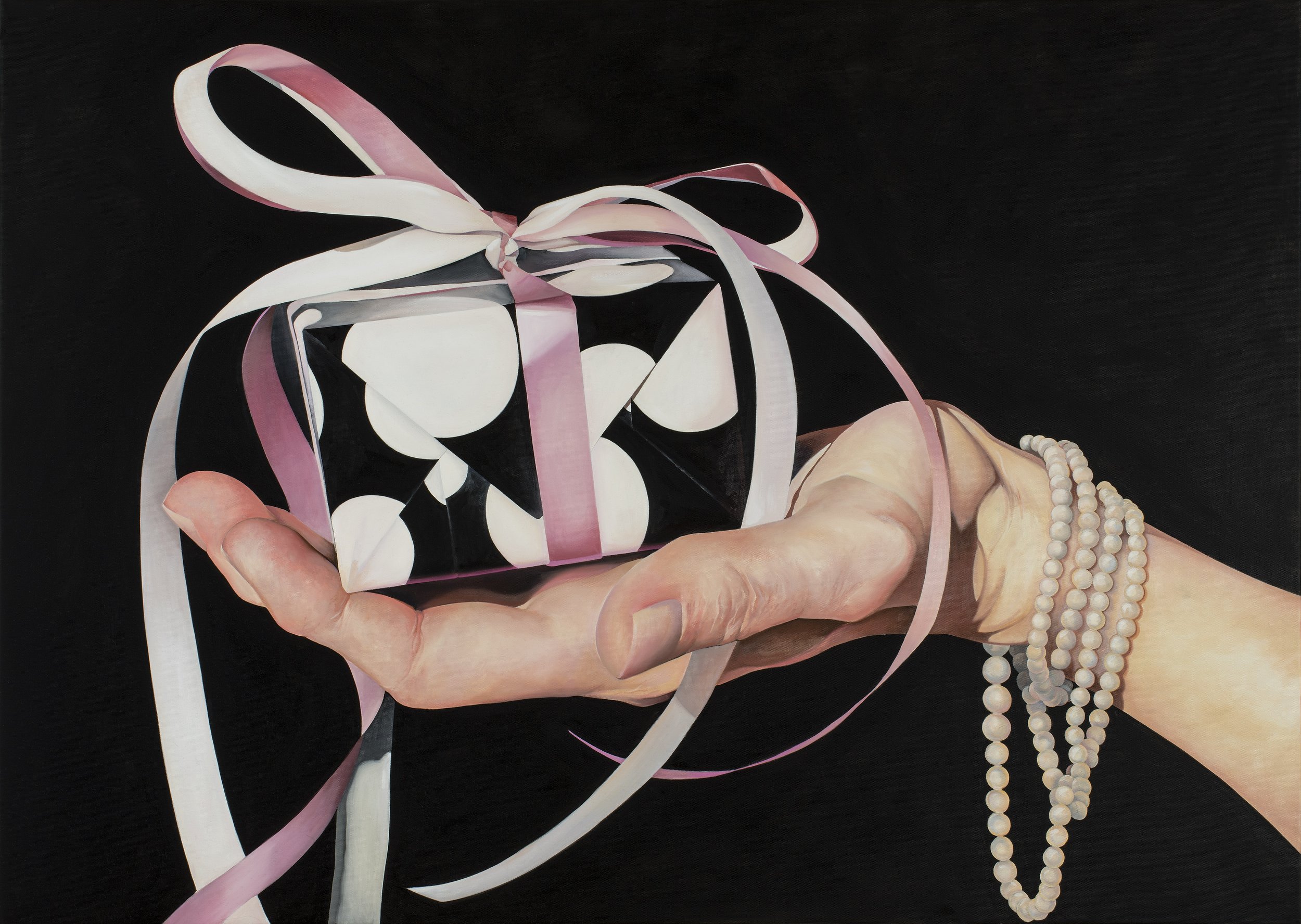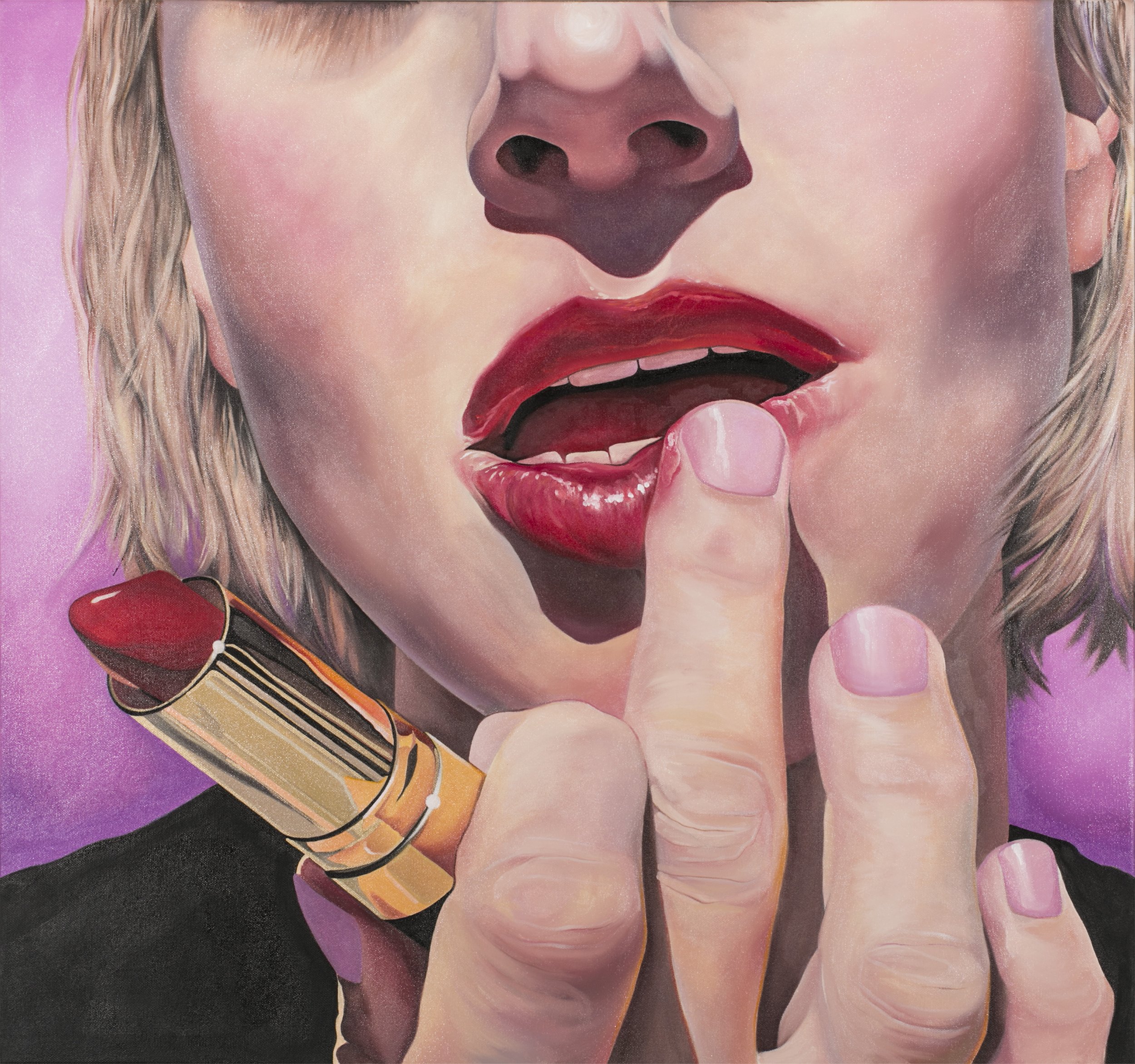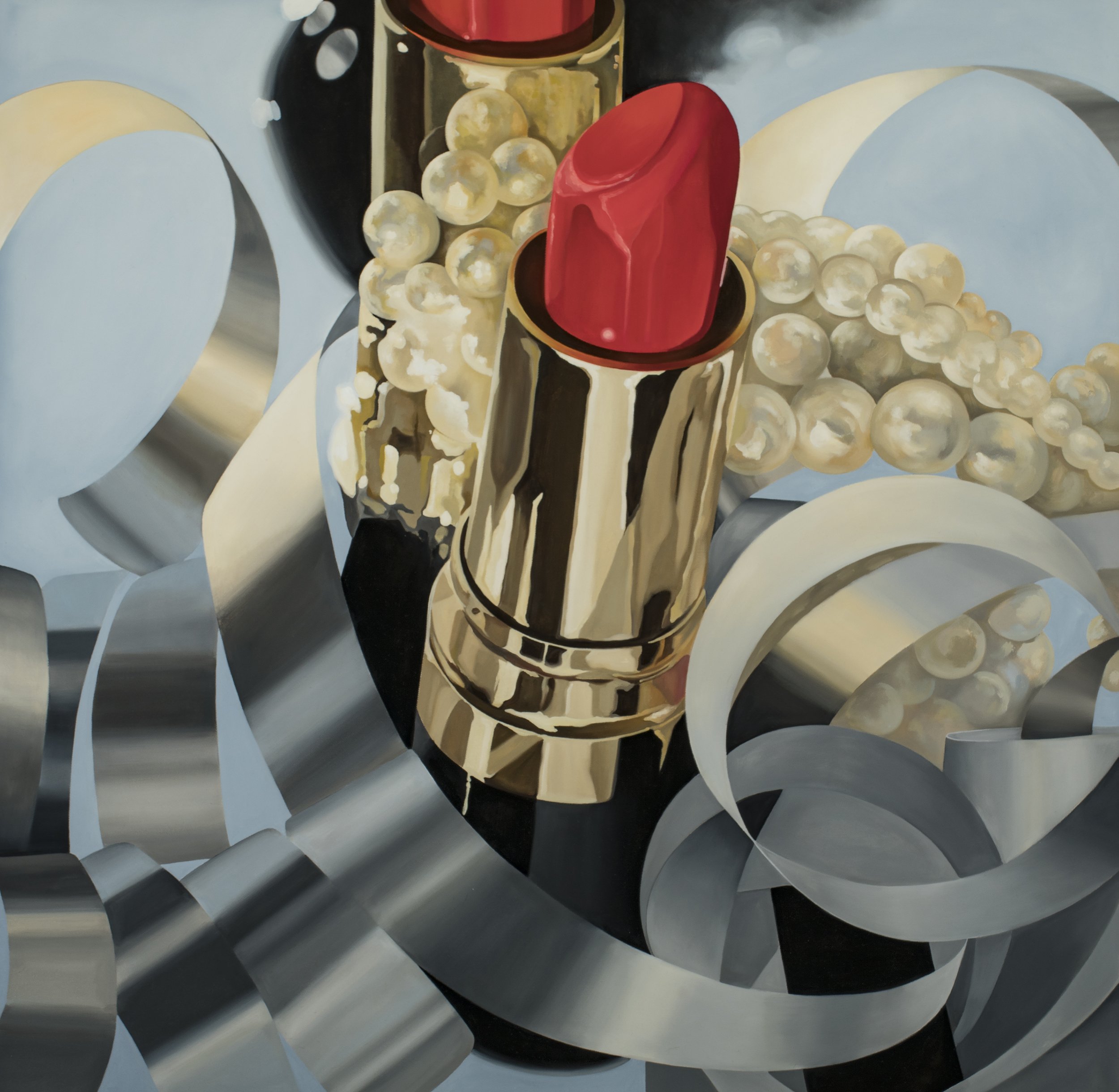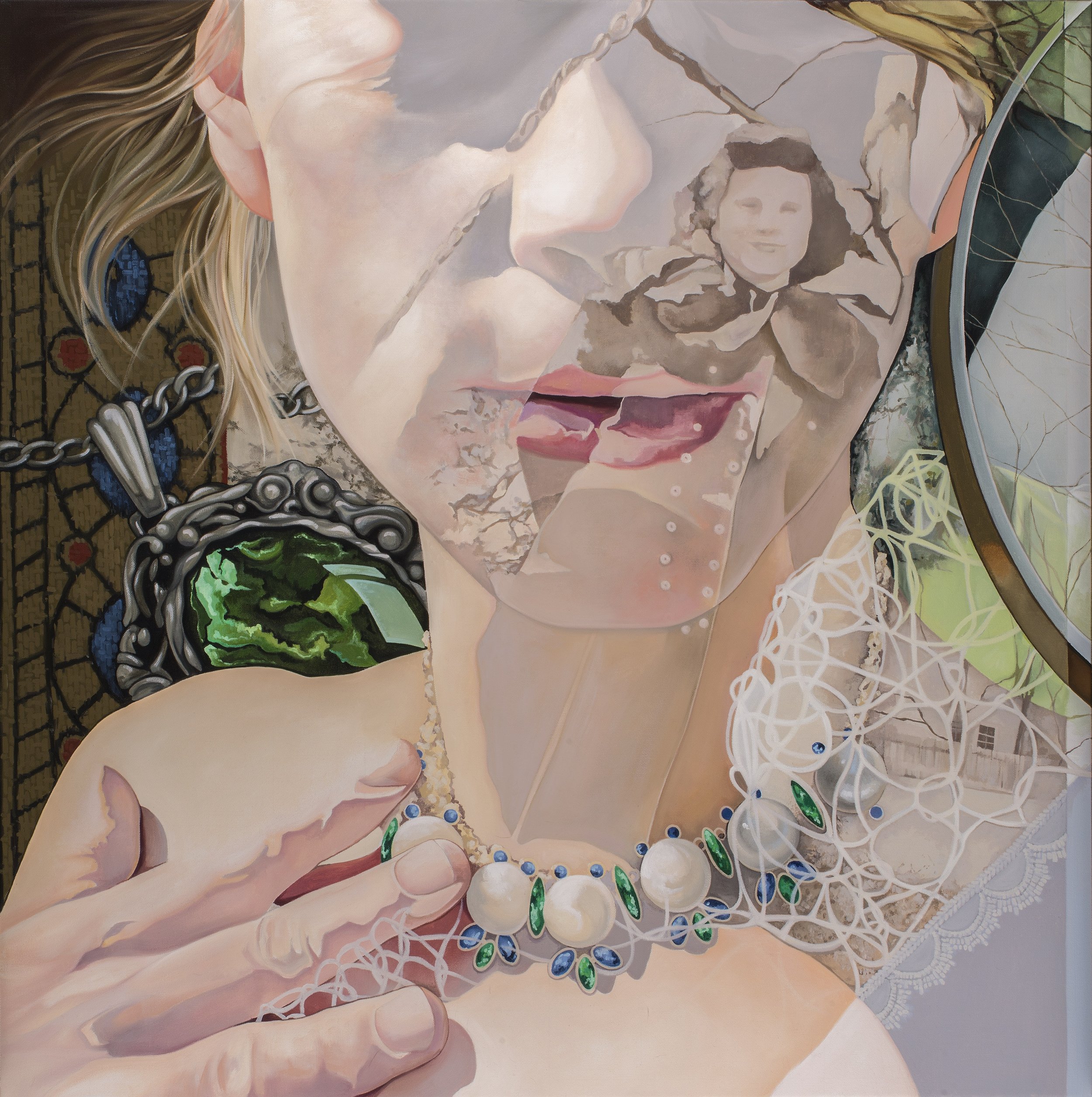ARTIST INTERVIEW: DARYL ZANG
Please introduce yourself. You were brought up immersed in art, visiting galleries in New York, which artists have resonated with you the most? Have they been influential to your own practice?
My name is Daryl Zang and I am an oil painter living and working in Connecticut, USA. I was born in New York City but only lived there for a few years before my parents moved to Connecticut. Whilst we were in the city, my mother took me on outings to the museums and I very clearly remember always being excited about seeing Henri Rousseau’s “The Sleeping Gypsy” (and also a little frightened of that lion). I can still picture where it was hung in The Museum of Modern Art. We also took a lot of trips to the Metropolitan Museum of Art because my mother loves Seurat and she would have chosen to visit those paintings and also the Impressionists.
I was very young when we made these trips, but I think being raised by people who valued art, sought it out and included me in visits to museums influenced me very much. Art was something I was familiar with and comfortable looking at from a young age. I was always encouraged to make art and it’s something I have always enjoyed making. Having that little nudge forward early got me started and my family’s encouragement and positivity is probably why I’m still a practicing artist today.
How have experiences in your own life inspired your artwork? Did your artwork change after becoming a mother?
I studied painting in school, earned a BFA from Syracuse University, and after graduating, I worked in art related jobs. It wasn’t until I was home as a new mother that I returned to my own painting, to both maintain a sense of identity and for the pure enjoyment of it. It might have been the most unlikely, sleep-deprived stage of my life to choose to return to art, but it proved to be the best timing. I had no big expectations at the time so allowed myself to experiment, fail and regain the confidence necessary to make paintings. My experience as a new mother became my first subject matter and trying to figure out that new stage of life was what inspired me most and my work was very autobiographical. I painted about pregnancy and the early stages of motherhood, I painted my children, and when it was rest I needed most, my work became about quiet relaxation. I have my children to thank for teaching me to slow down and look for paint worthy moments every day. This perspective influences my artwork even now, all these years later.
Thinking about ‘Pieces of you’ from your ‘Daydreams’ series, describe your creative process? What is the narrative you are trying to convey through this work?
The “Daydreams” series came about at a time when I was dealing with how to process tragedy and loss. It didn’t seem fitting to use my traditional representational style for these pieces because I wanted to put my feelings on canvas but in a more guarded and hidden way that made me feel more comfortable with expressing my emotions. For these paintings I used overlapping images that had personal meaning but that were combined to make something beautiful and left open to interpretation by the viewer. Each of the paintings in the series deals with something different but “Pieces of You” was inspired by my maternal grandmother. She died when I was four years old, and my mother tells me we were best friends. I made the painting using items I have that were hers and that serve as a connection back to her. The painting is about remembering (or trying to remember) and the disorientation that comes with trying to know if you truly remember someone from your life or if you only know them from pictures or through shared possessions and stories you’ve been told.
You have previously stated that you’re ‘constantly looking for inspiration’, where do you feel most inspired? What are the characteristics of an interesting subject to capture?
The majority, if not all, of my inspiration comes from my daily routine at home. I never travel anywhere or seek out any special props for my paintings, everything I use is just from my regular life or things I’ve inherited. I’ve also used my boys and myself to model many times.
I truly enjoy the challenge of taking the “everyday” or the ordinary and elevating it into something beautiful and captivating. Over the years, I’ve incorporated lipstick from my makeup drawer, pearls from my grandmother, ribbons used for wrapping gifts, and even my sunglasses into my paintings. I tend to be drawn to colorful objects and things that have reflections or movement.
The challenge is to make an interesting and meaningful composition that includes interesting light and shadow and hints at a narrative. The most important elements to get right are composition and light and shadow.
What ignited your fascination with painting people blowing bubbles?
My bubble series began years ago in my backyard, watching my son playing and blowing bubbles. It was just one of those moments that came about by chance and captured my imagination. It’s such a fun subject and series to paint! The reference photos can be tough to capture though because you have no control over the breeze or the length of time each bubble will last. I keep returning to the series because the paintings are playful, colorful and combine both the figurative realism that I love, a bit of still life, and also moments of non-representational painting in the bubble reflections.
Beyond the technical aspects, bubbles are a great subject because they hold so much meaning. To me, they represent a sense of impermanence because they have such a brief but beautiful existence. They can also represent wishes, hopes, and dreams that may feel unrealistic or temporary – maybe even the wish to leave your own bubble or sheltered world.
Which piece are you most proud of, and why?
I don’t really have one particular piece that stands out overall, but I am proud of certain paintings for certain reasons. There’s the first painting I completed in my current studio, the first painting that I exhibited, my fastest sale through a gallery, and the first piece I sold on my own through a social media post. I always strive to do the best work I can and only let work that I’m proud of leave my studio.
What does a typical day look like for you as an artist?
I stick to a pretty consistent routine and make getting into my studio my top priority. I’ve always gotten up early to see my boys off to school so once they leave and I’ve gotten in some exercise and figured out the day’s Wordle, I head to my studio with a cup of tea. My goal is to be in the studio by 10am. I’ll take a few minutes to sit quietly and assess where I’ve left things from the previous day and make a list of priorities. I tend to keep several projects going at the same time in various stages of completion so that, depending on my energy level, how focused I feel, and whether certain paintings are dry enough to work into, I can choose what to devote my time to. I make an effort to take advantage of the school day. My sons are older now but once my younger one comes home around 3, the day tends to be less likely to stay on schedule. Sometimes I’ll be able to paint a little longer, but the afternoons are also a great time for me to return emails or complete office tasks. Maintaining such a predictable routine is really important to me because it allows me to plan ahead and not stress over whether or not I’m going to be able to check things off my to do list. Despite the fact that this routine was established when my children were much younger, it works for me even now. There is a comfortable rhythm to each day and I predict that I’ll be maintaining it for years to come.
What has been your greatest achievement so far as an artist? Have you endured any challenges?
I think just being able to say that I’ve maintained a consistent studio practice for 20 years is a huge accomplishment! I started painting seriously at about the same time as my eldest son was born. Being able to maintain a balance between my artwork and raising my children has been exhausting at times but well worth it. There have been a million reasons to put my work aside and times where I’ve painted late at night because the day didn’t go as planned but I knew it was important to keep my momentum moving forward, even if it felt like I was moving forward at a snail’s pace. There have been years where I’ve only made a few paintings or thrown more work out than I’d like to admit. I’ve also often felt isolated outside a major city, but I’ve tried to participate as much as possible. I can be hard on myself but I’m proud of the fact that I have been able to show work, sell some of that work, and keep working towards my goals.
Why do you think art is important in society?
Art is important for many different reasons, the most obvious being that our world would be bland and boring without it. Beyond the purely aesthetic reasons, art connects us and helps us understand one another. Artists have the ability to share stories about events, communities, cultures, and emotions in a way that can resonate with a diverse audience. Artists can communicate their values and perspective and help bridge the divides that we find so often in today’s world.
I also think there is something really special about a piece of art created by hand. Society today is so addicted to computers and smart phones that we don’t even see each other’s handwriting anymore. Being invited into an artist’s mind and to see how they express themselves through their brushstrokes, material choices, and technique seems really intimate and soulful in today’s world. I personally am fascinated by seeing an artist’s “hand” revealed in their work. As more “artwork” is generated through AI, it is important that artists continue to express their individuality and continue to create work that surprises and captivates us all and to remind us of our humanness.
For the same reasons, I think making, not just viewing, art is important to all of us in society. There are so many valuable and enriching reasons why children and adults should have the chance to create and express themselves in a tactile way through art. There is an intangible something wonderful about getting your hands messy and drawing, painting, or sculpting that cannot be matched through a screen.











